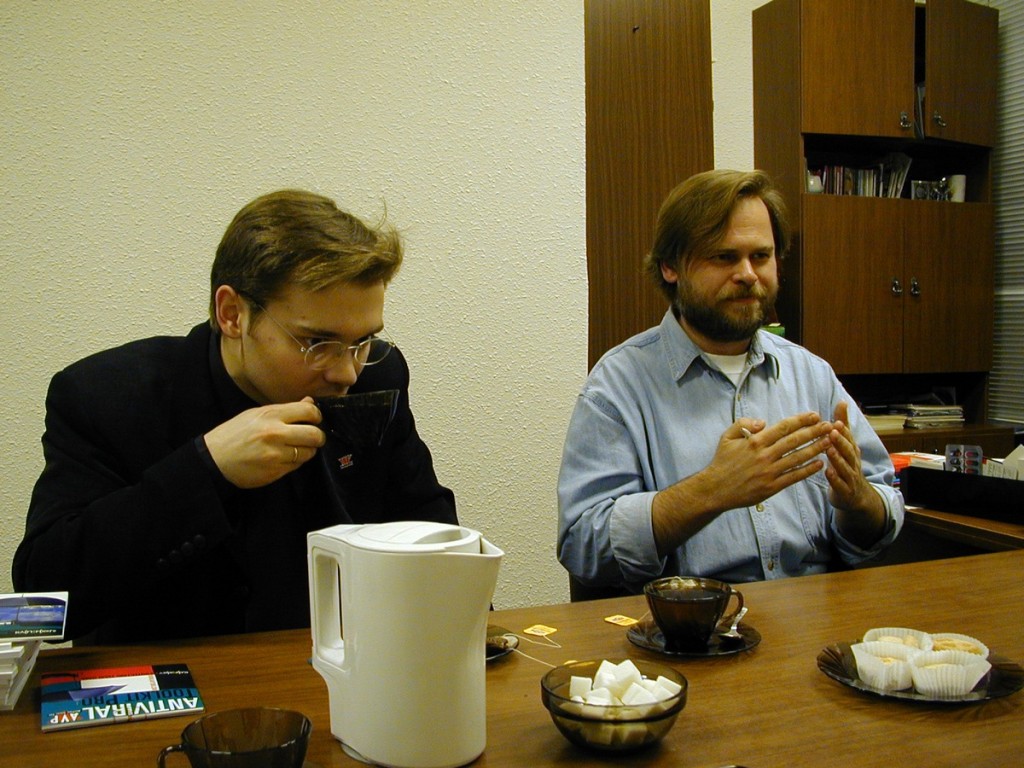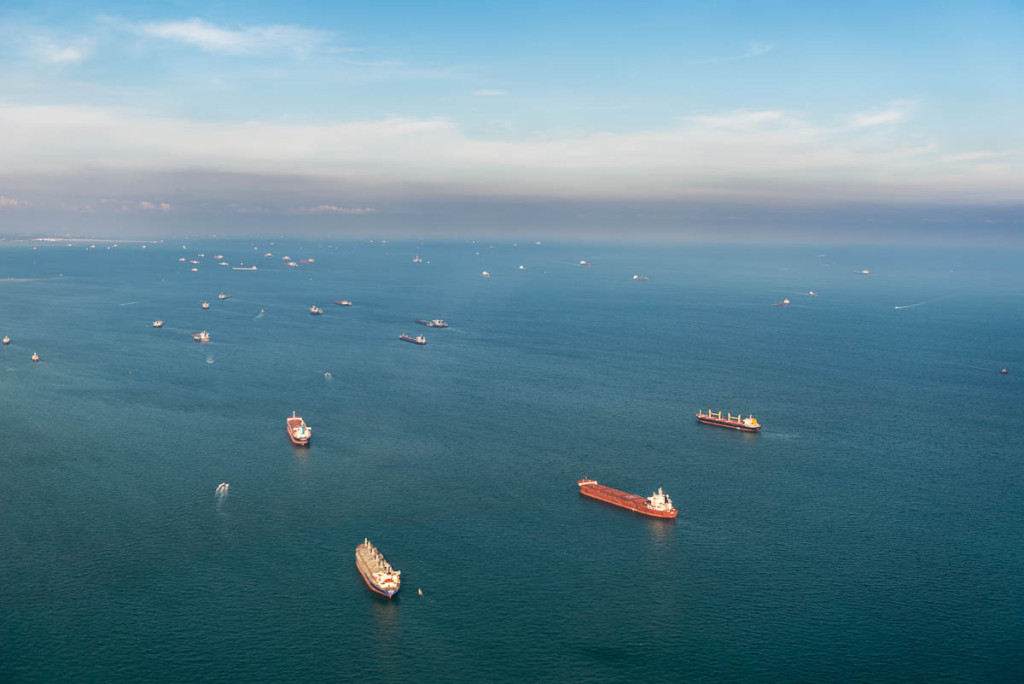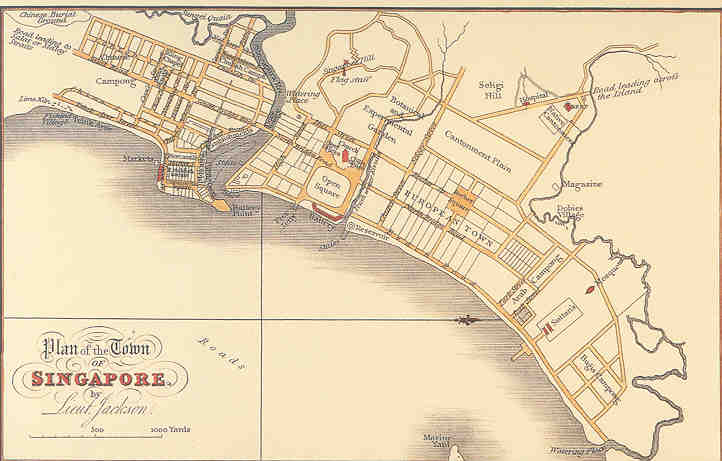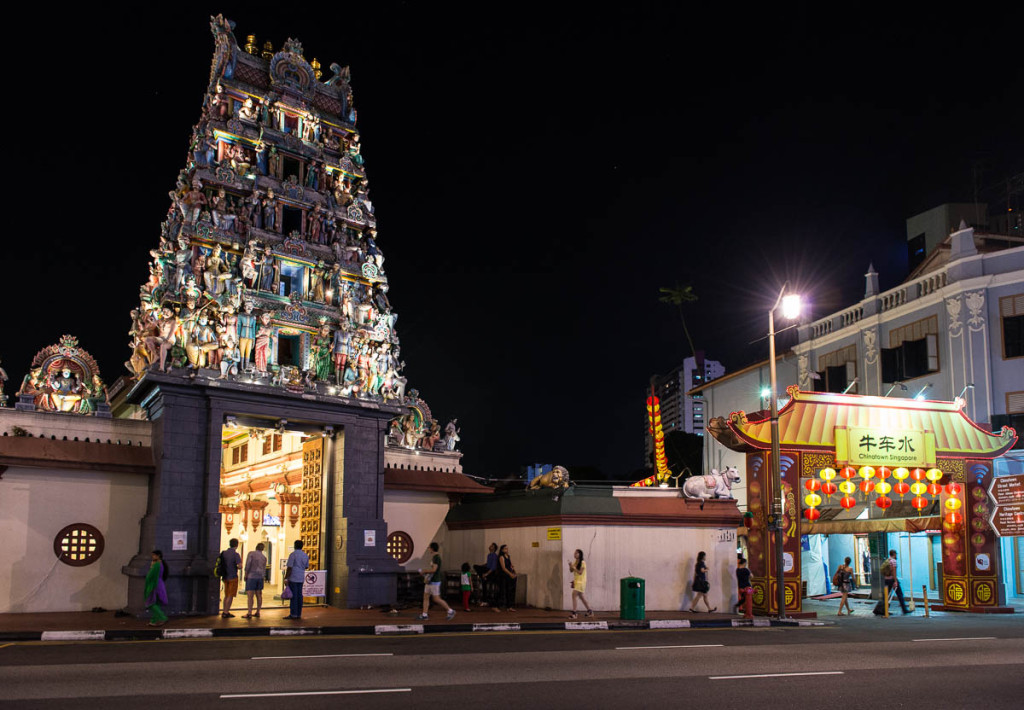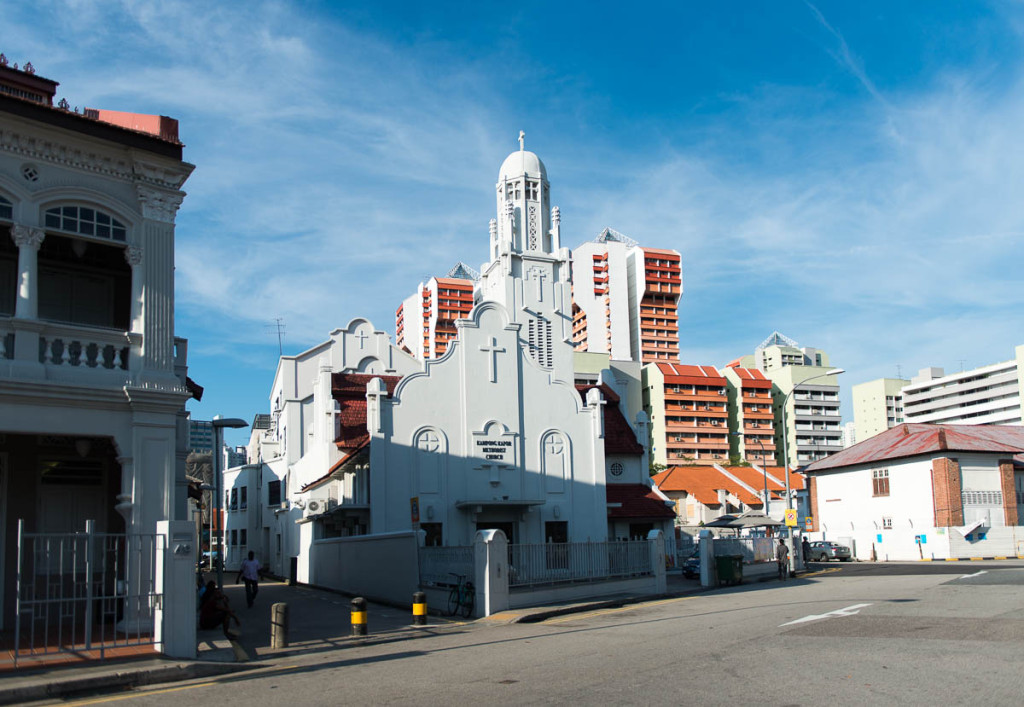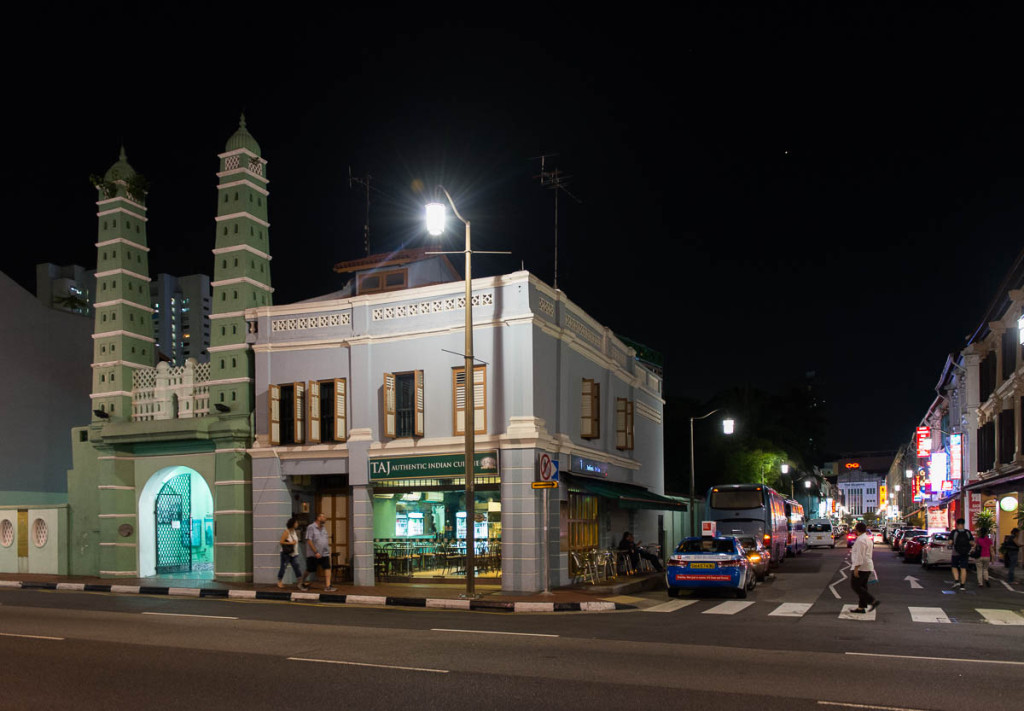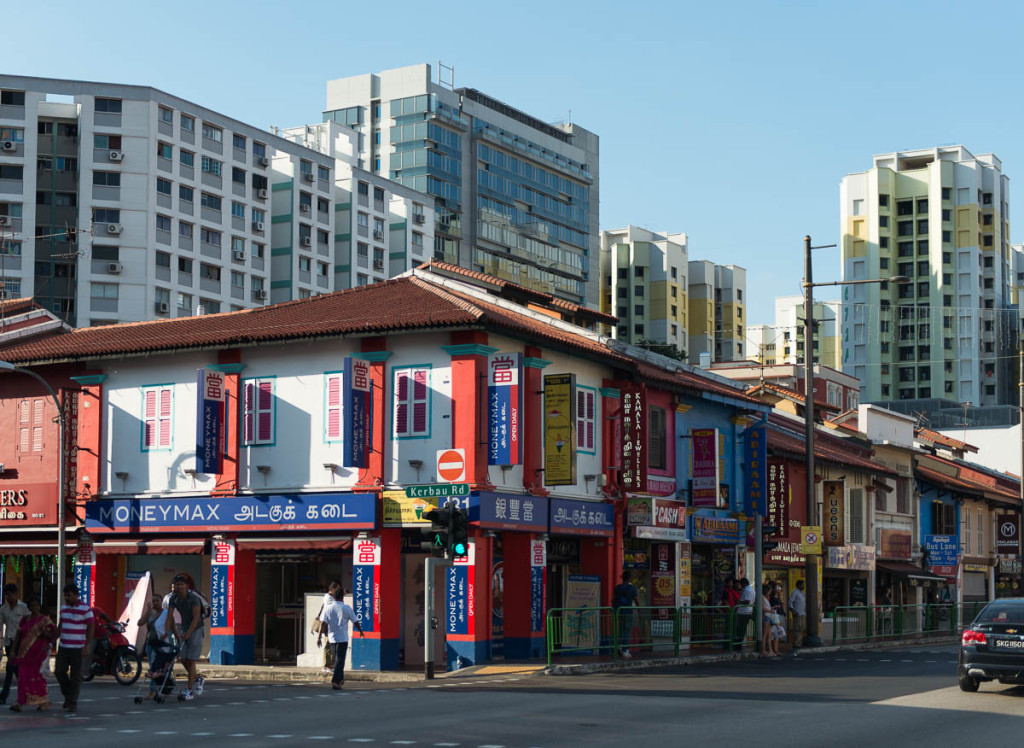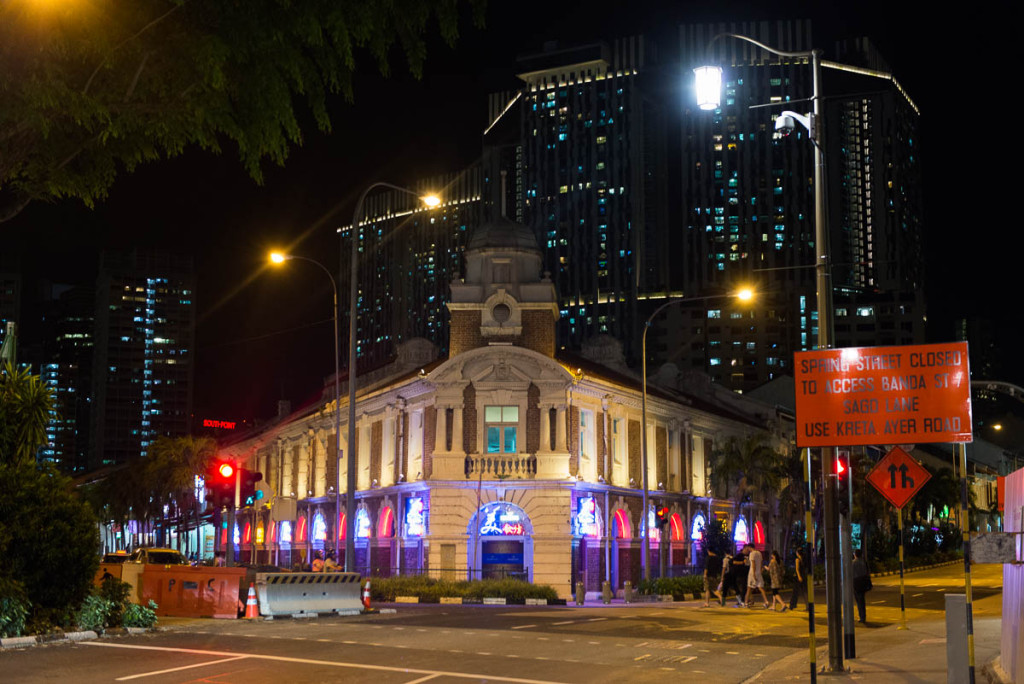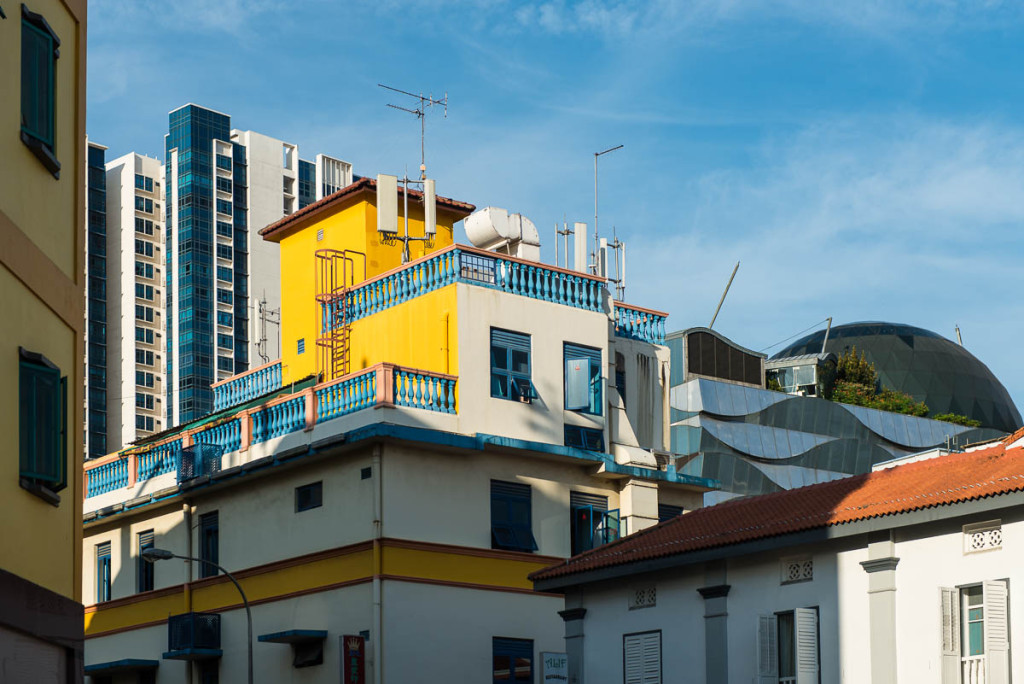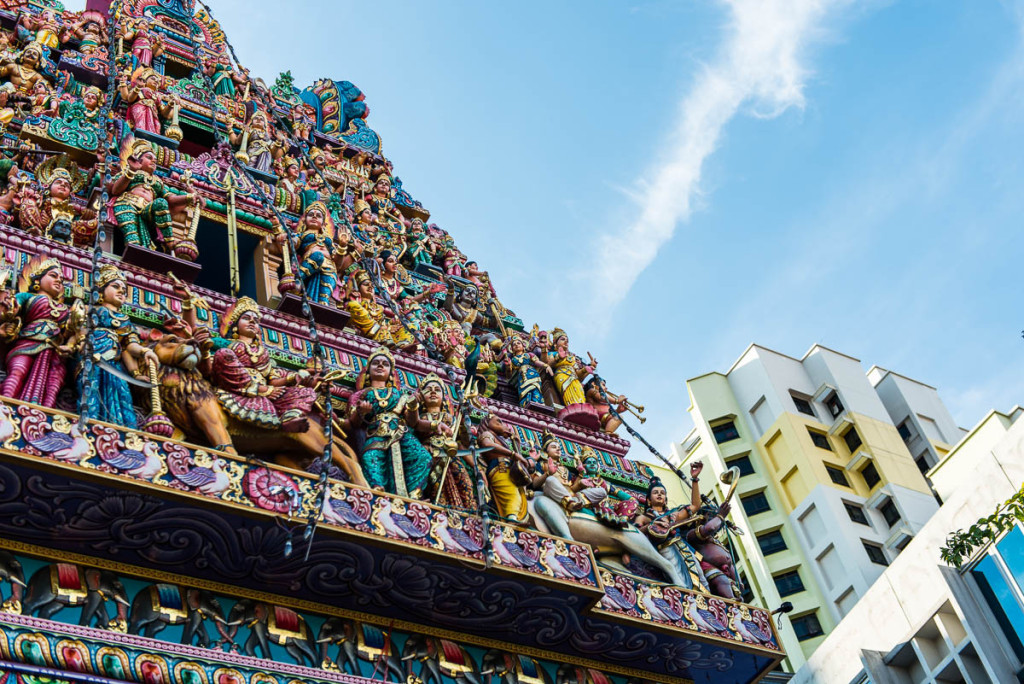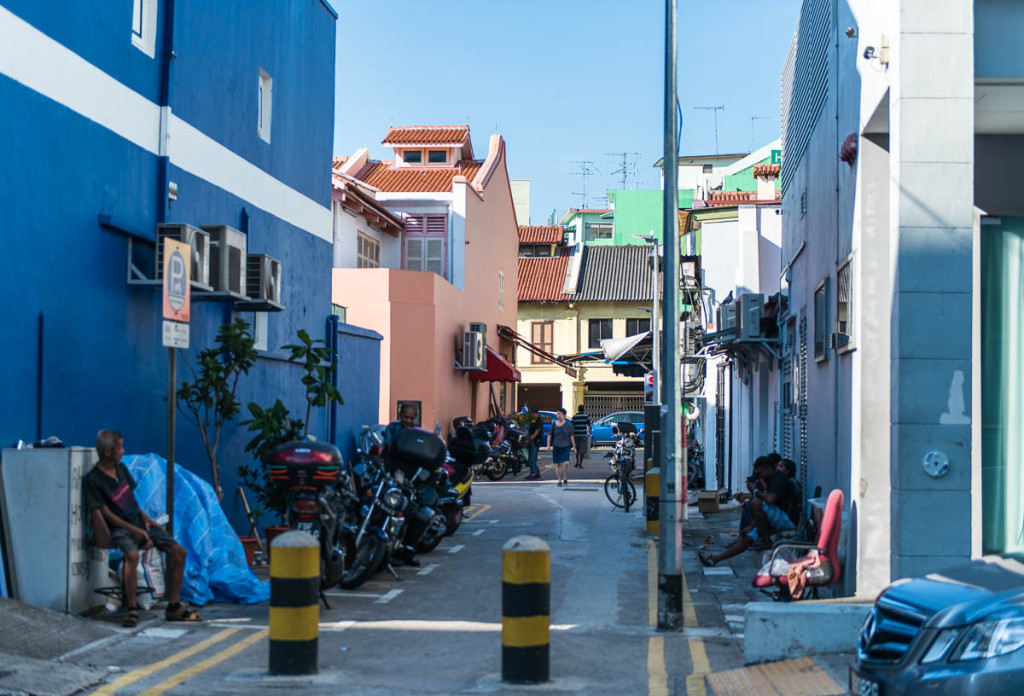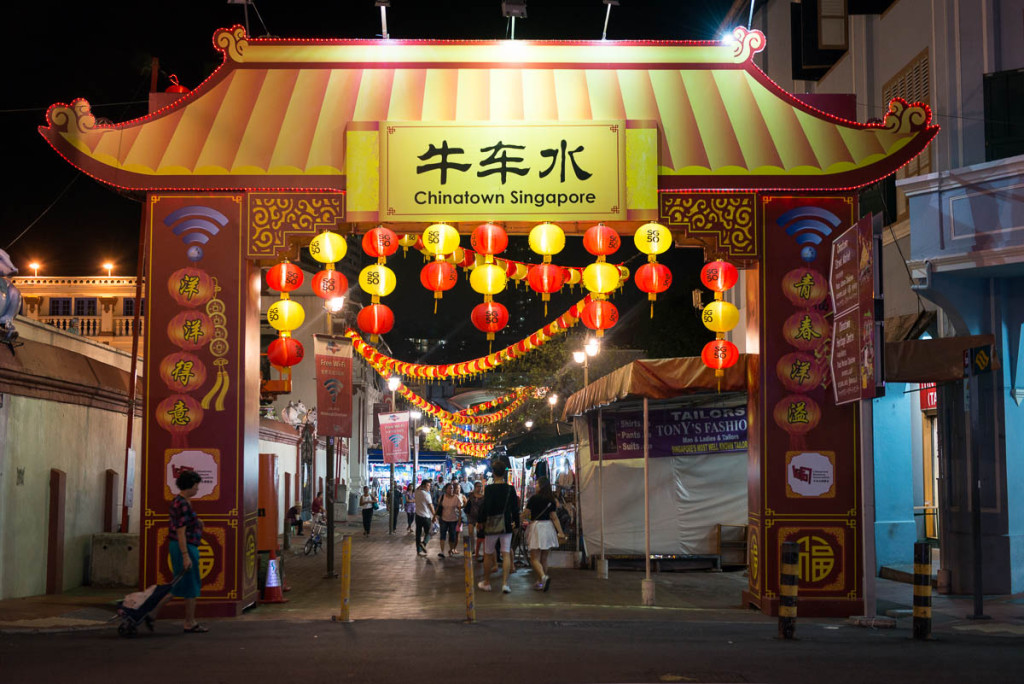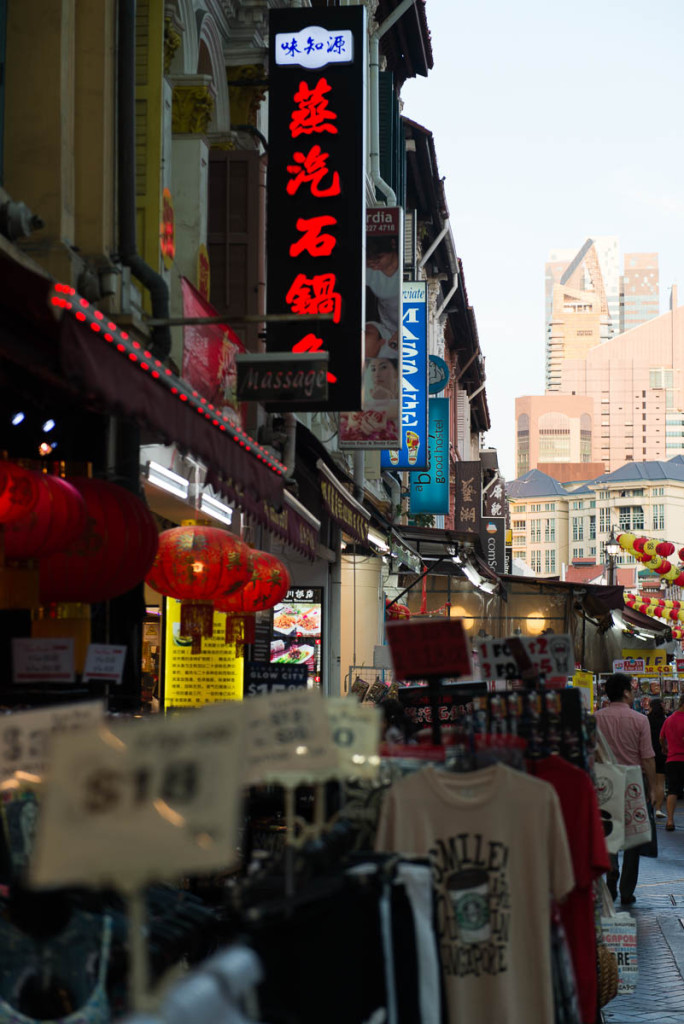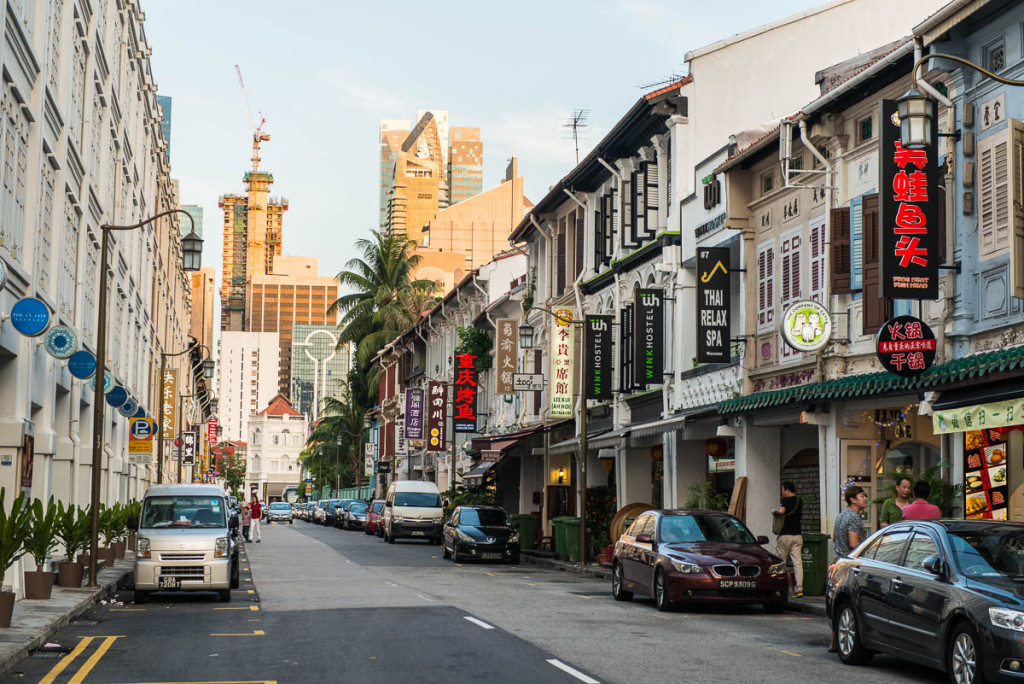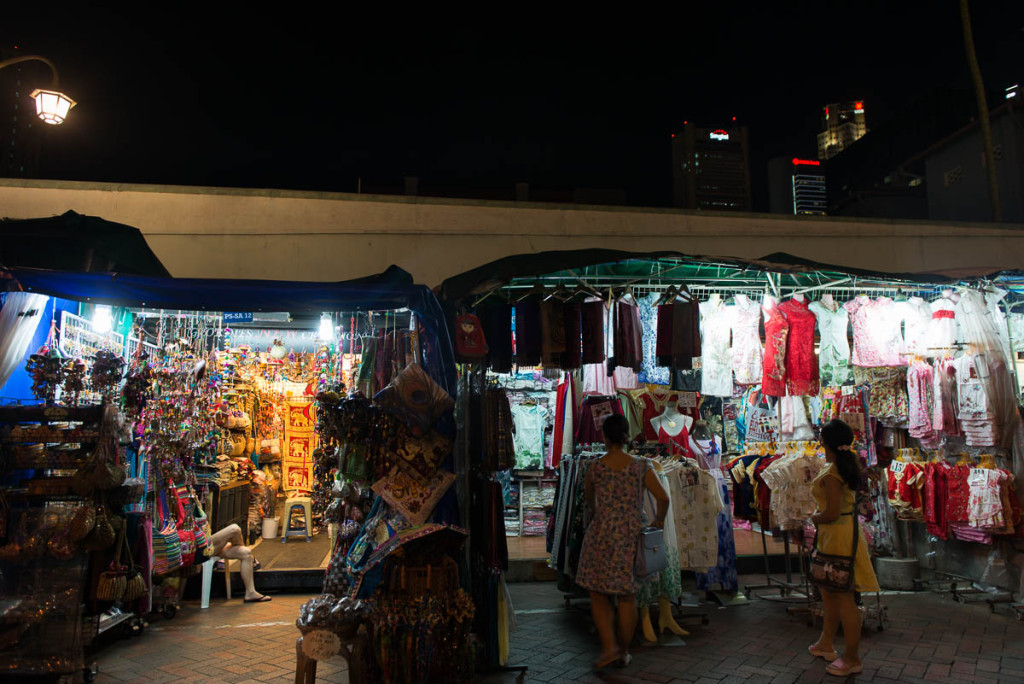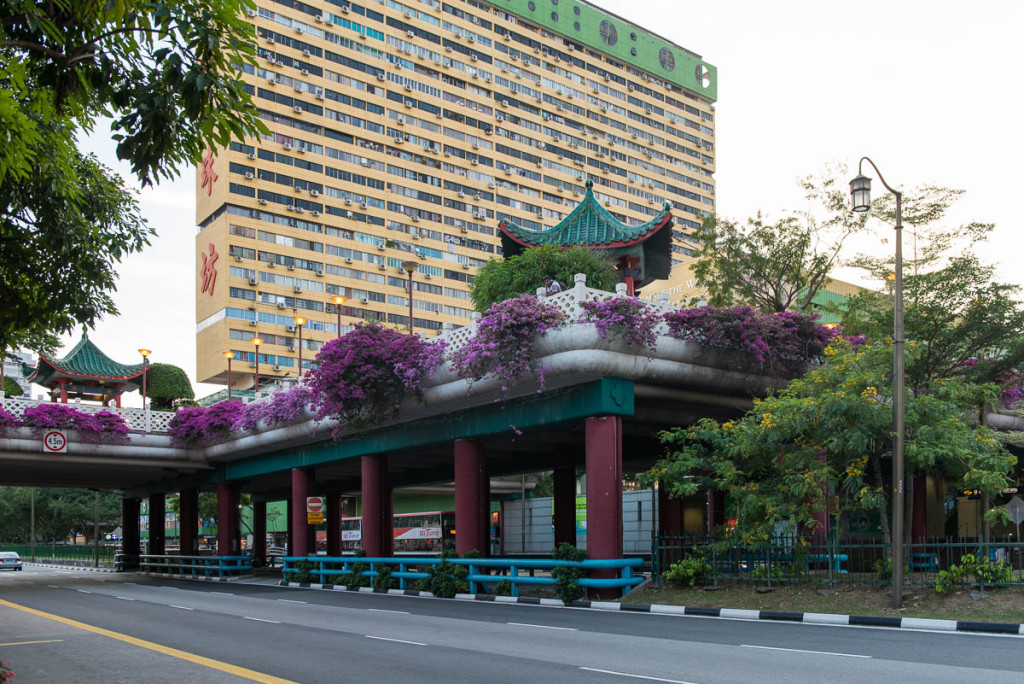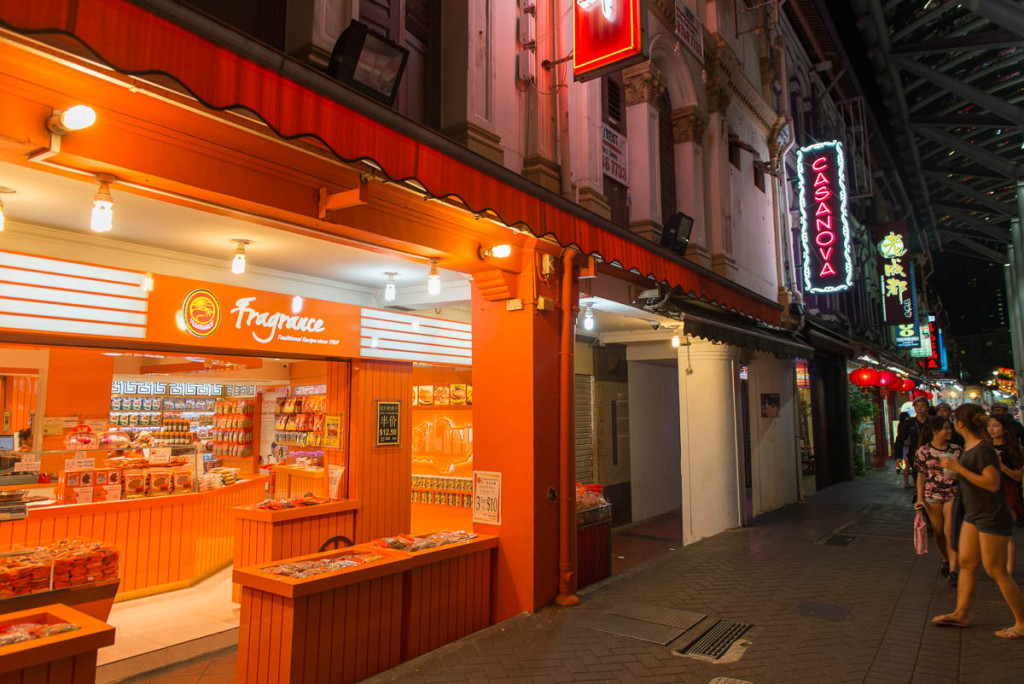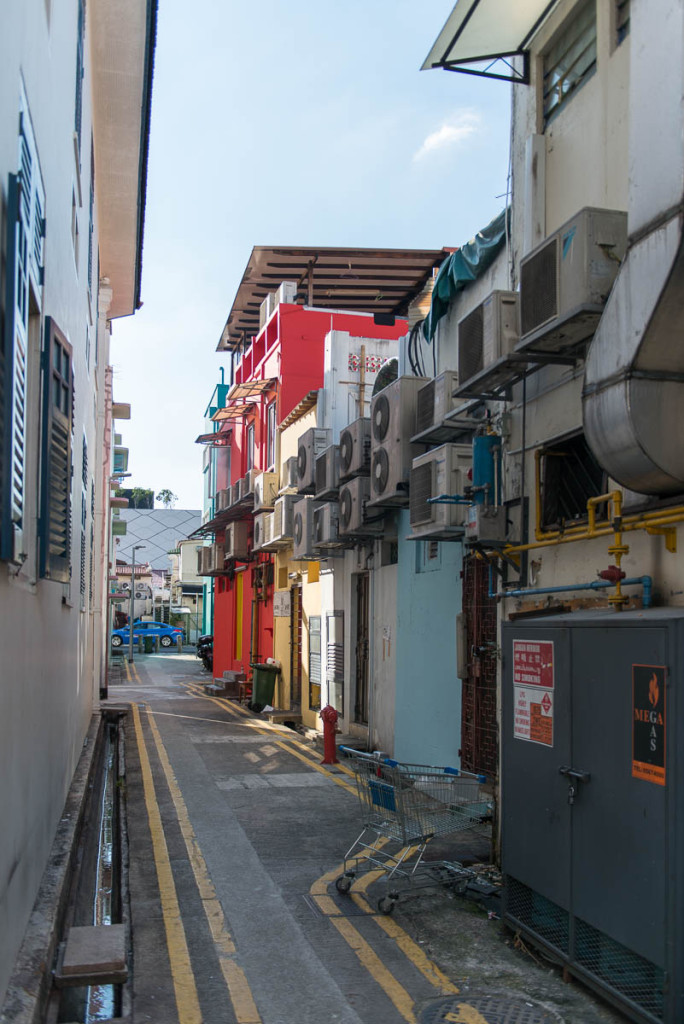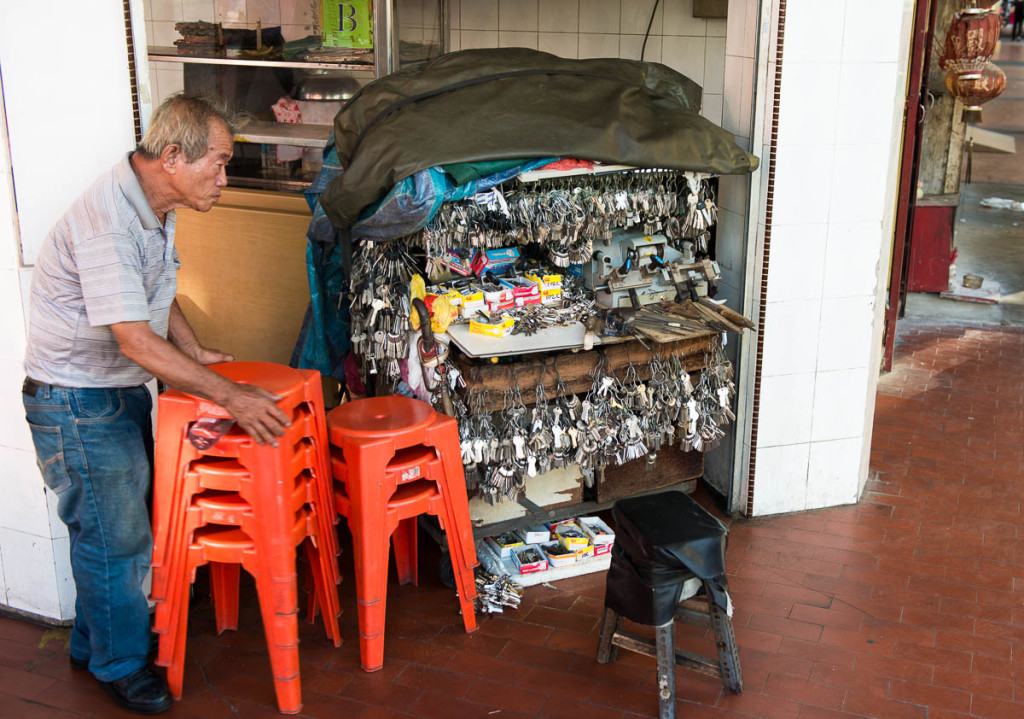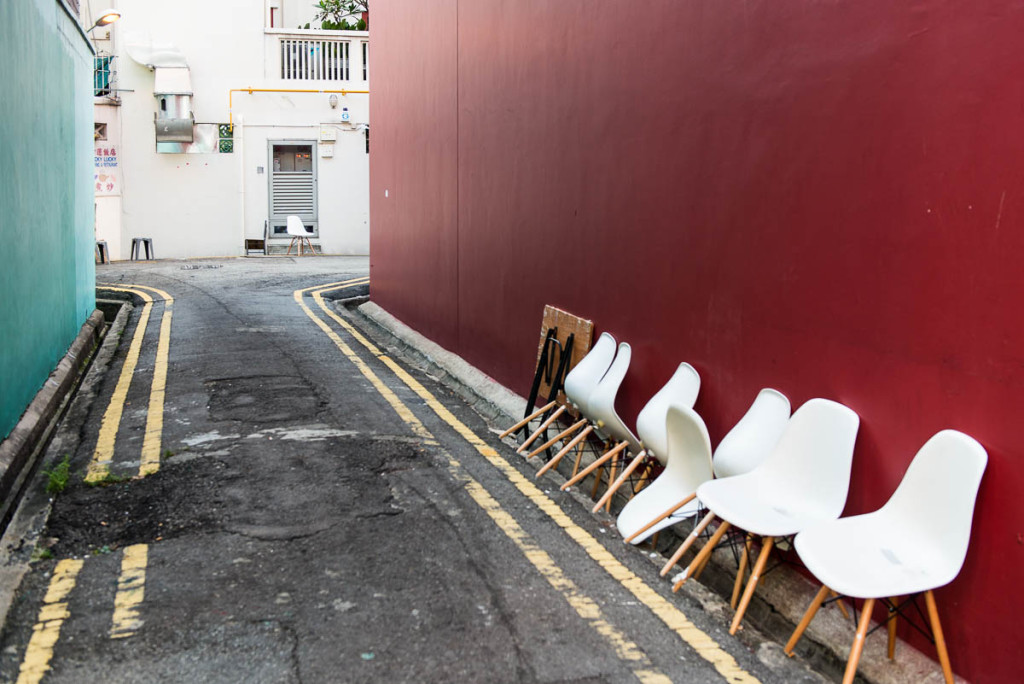April 24, 2015
Singapore through the eyes of a first-timer.
Hi all!
D.Z. – this is one of most distinguished and respected KLers, with us since last century (taking a brief creative break in the mid-2000s). D.Z. has also been my fellow traveler a d.z.illion times to… oh, practically everywhere on this planet – but surprisingly not to Singapore. He always takes with him a trusty large black (super-duper) DSLR camera with a dozen or so different lenses too – his tools to create most of the pro-level pics on this here blog and elsewhere. He’s also a great storyteller, so he helps out with all the tales I want to tell – whatever they may be about. Still, despite all these talents, plus his confirmed KL-Establishment member status, he is nevertheless the most modest guy you’d ever meet.
Like I say, somewhat surprisingly this was D.Z.’s first visit to Singapore. He liked the place so much he took more pics than he normally does and wrote a long write-up too. It’s true that there’s ‘nothing like the first time’. It’s also true that a fresh pair of eyes will see things in a foreign place that others who’ve been several times before already miss due to familiarity – or just plain tiredness from the non-stop globetrotting. Thus, in this post, I pass the reins over to D.Z. to let him give his ‘first-time’ account of this remarkable city – just for a different, fresher perspective.
My only comment to the story: want one book to read to get the real real deal on Singapore? Check it: Lee Kuan Yew – ‘From Third World to First‘
So, D.Z.’s tale:
—-8<—-
What do we know about Singapore?
It’s a long way away, hot and humid, skyscraping, totalitarian, and they beat you with sticks for dropping gum, spitting, walking barefoot, and other carnal sins. At least, those are the stereotypes impressions of I’d say the majority of non-Singaporeans from afar, for those are the bits that seem to end up in the world’s media about this city-state extraordinaire.
This was my first time in Singapore.
What I saw with my own eyes was far from what I expected – nothing like the above-described imaginings. I have habit of boning up on a country I’m planning on traveling to – to get to know the ‘real’ place and not get caught up in lazy stereotypes and maybe inadvertently insult or upset or annoy anyone. And Singapore’s real deal fairly amazed and intrigued me. The first half of the 19th century is packed with curious history I’d let pass me by, but it’s fascinating how it’s connected with all sorts of details of international relations of my time.
Collisions of civilizations, a struggle for colonies and trade routes, the friction within and among European and Asian powers, wars, injustice, betrayal, greed and other unpleasantness… Singapore had more than its fair share of all of them. Its history is peppered with nightmare tales, but all the same, in spite of all that, today it stands as the shining example of a successful state based on humane, productive cooperation among peoples, helped by being at an important crossroads of civilization.
A natural competitive advantage of Singapore is its geographical location on a strategic sea route connecting East Asia with the rest of the world. Despite miraculous diversification of the economy in its 50 years of independence, already on the approach to Changi airport it becomes clear how this advantage still plays a hugely important role in the development of the country.
Back in 1819 it was exclusively the geography of the island that made Britain’s Sir Stamford Raffles set up on the bank of the Singapore River a watch post. Within just several years it had become an important hub of influence of the British Empire in Asia.
Singapore was founded not on an empty greenfield site but on a longstanding fishing village in which folks of different nationalities and religious faiths had lived peacefully for a long time. The arrival of the British naturally saw the town take on a decidedly more European flavor. And, talking of flavors, incidentally the resultant Singaporean cuisine came to be a most interesting and original one – the dishes both tasty and unique.
Having founded Singapore, Raffles left it for a few years to do yet more of his bit for the Empire, handing over the reins to a Major-General William Farquhar for the duration. Upon Raffles‘ return three years later, he was met with two main developments – basically good news and bad. The good news was that the town had gotten much busier and bigger. The bad – it had gotten much busier and bigger un-systemically, resembling an eastern bazar than an exemplary model of a colony of the British Empire.
So a town council was quickly created under the supervision a Lieutenant Jackson, who soon developed a plan for the reconstruction of Singapore. In the main, it was divided up based on the ethnicity of the inhabitants; thus, European, Chinese, Indian, and Arab (Muslim) quarters emerged.
It might seem correct at this point to label Jackson an out and out racist and accomplice in apartheid. However, it turned out that such division suited everyone just fine! Each group was happy to cook in its own juices – yet still work closely together; indeed, they’d be doing so for centuries before Raffles. Since then of course, in almost in 200 years, a lot has changed; all the same the main traits of the town-building designs of Jackson remain.
Singapore has two principal must-visits – Little India and Chinatown. Guess which ethnic nationalities make up most of their populations? Yep – Indians and Chinese, respectively, even after all these years. In fact the delineation is blurring somewhat, with many an Indian and much Indian signage to be seen in Chinatown, and vice versa. The result is a serious bit of multiculturalism: Pagodas, stupas, mandirs (Hindu temples), mosques and churches all together peacefully coexisting on small squares. Nice. All the same, the dominating cultural ‘signature’ of the districts remains.
 Inside the mandir. It’s one of very few places where it’s possible – in fact mandatory – to go barefoot. Everywhere else – there’s a fine
Inside the mandir. It’s one of very few places where it’s possible – in fact mandatory – to go barefoot. Everywhere else – there’s a fine
You get the impression that the ethnic divisions introduced 200 years ago didn’t actually divide, but instead instilled in the population of Singapore national, cultural and religious tolerance. Folks live in their big families and respect one another.
 Little India. To the left in this pic – a mosque
Little India. To the left in this pic – a mosque
Little India is a bit of an exception as a district of Singapore. It seems that here the prohibition of dropping trash just doesn’t work: the streets are somewhat littered with… litter, and sometimes you feel a distinct whiff of rottenness or sewage or something. It’s not that the authorities don’t try their best at keeping the streets tidy – there are trashcans everywhere, and I saw them being used. The trashcans just keep getting missed! Still quite a bit tidier than Big India :-).
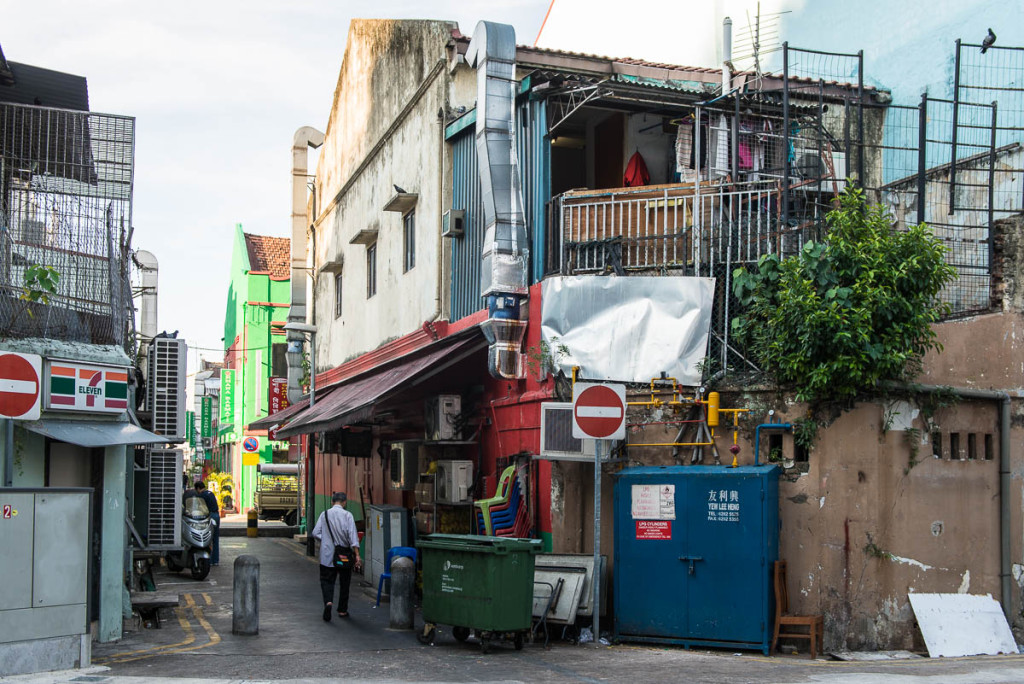 Probably the dirtiest and most run-down side street of Little India. Still – not so bad
Probably the dirtiest and most run-down side street of Little India. Still – not so bad
 Many Singaporeans go to Little India for their fruit and veg
Many Singaporeans go to Little India for their fruit and veg
 You won’t believe this – along this side street were found… red lights!
You won’t believe this – along this side street were found… red lights!
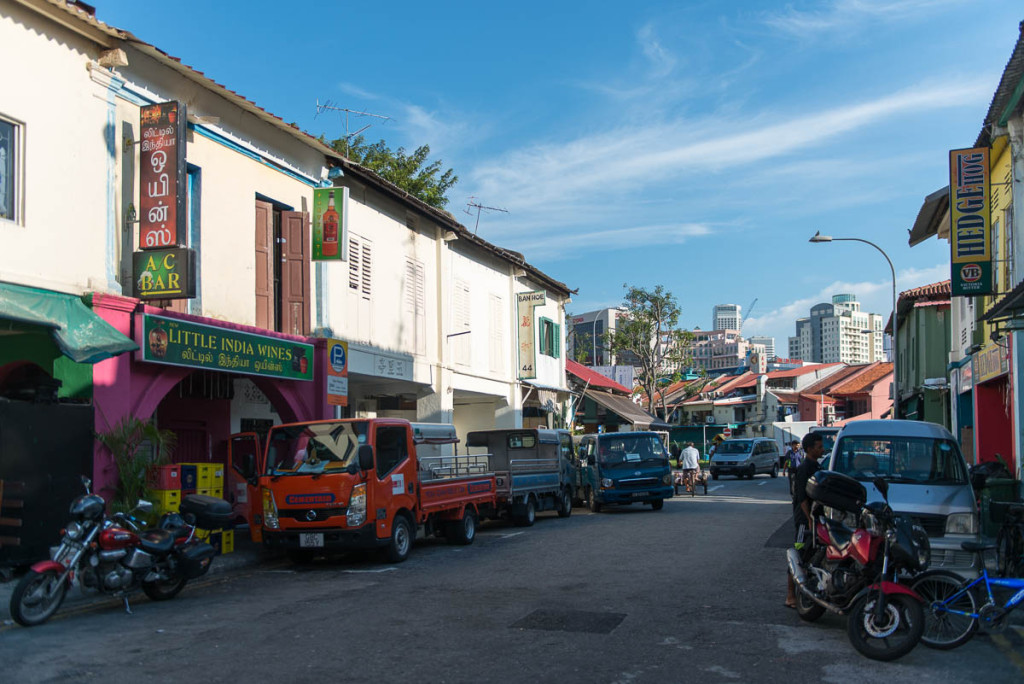 The wine on offer, they say… hardly Bordeaux
The wine on offer, they say… hardly Bordeaux
Chinatown, on the other hand – clean, neat and tidy, well looked after, while not coming across all OTT like a museum. Smells of Chinese cooking and the buzz of the trading areas make sure you can be without a doubt that you are in a true, original, authentic Chinatown.
The Chinese quarter is more developed. Here huge shopping malls and skyscrapers are organically built into the colonial streets. Wide roads, crowds of tourists. And two McDonald’s were detected :).
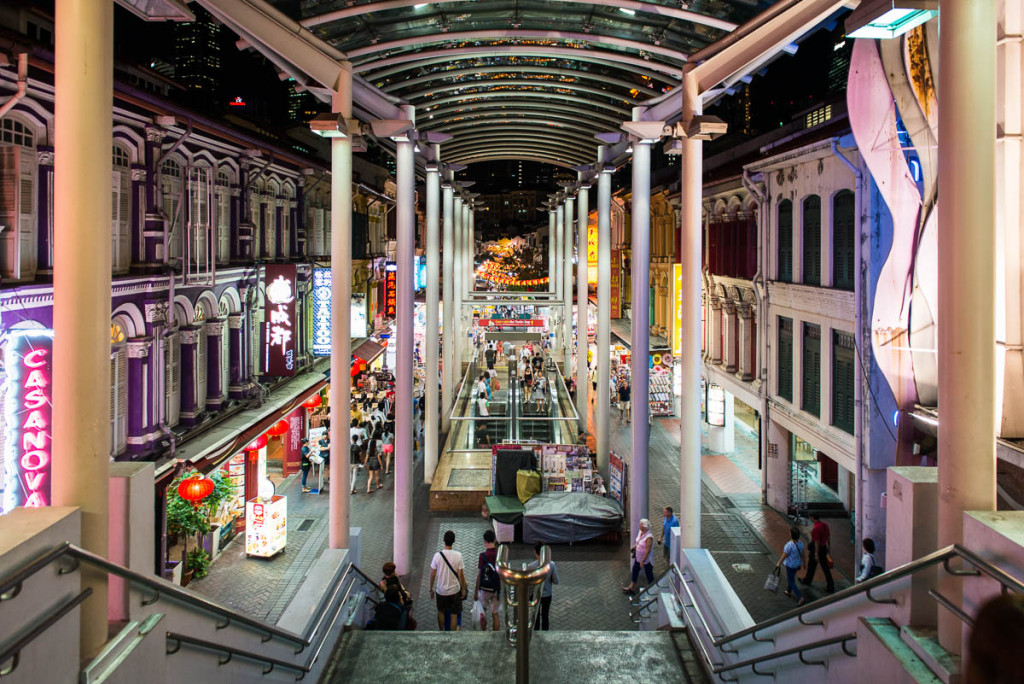 The main trading/retail street of Chinatown
The main trading/retail street of Chinatown
In Little India we were met in the street with curious interest. We wanted to experience the full range of Singapore sensations while we were here, so we didn’t fear turning down the less salubrious, even possibly ‘dodgy’ streets, so maybe that caused the curiosity. Or maybe it was the long, expensive lens, the photos from which you’re looking at now. In any case, we didn’t feel a tinge of danger. All contact with the locals was of a peaceful, good natured kind.
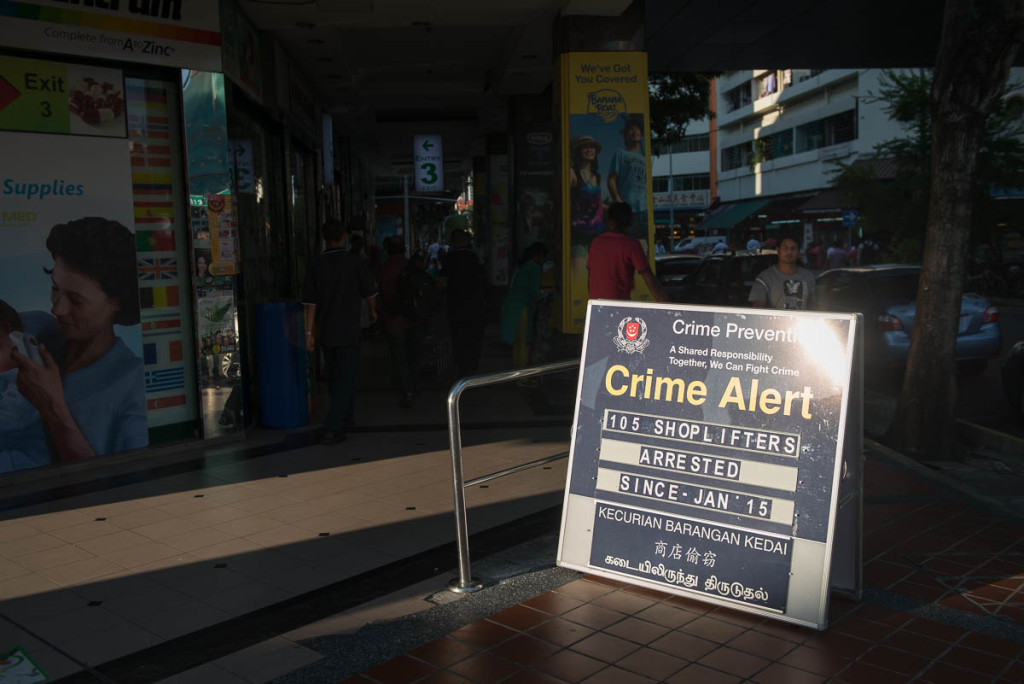 Shoplifters of the world – beware!
Shoplifters of the world – beware!
Singapore is a country you need to get to at least once in a lifetime. It has a specific, inimitable cultural ‘aroma’, is filled with a rich, fascinating history, plus an impossible concentration of wowee-places from different eras – all must-sees. It’s also a monument to hard work and diligence, to adherence to higher principles, and to the inventiveness of man and nation, which in 50 years turned a second rate Asian backwater into the exemplary modern business-state.
They say that there are two extra-special times to visit Singapore a year: at the two New Years (January and February). So there’s a reason to come here at a minimum twice, which I wholeheartedly recommend everyone does.
—->8—-
That’s all for today folks. Cheerie-ho!…
